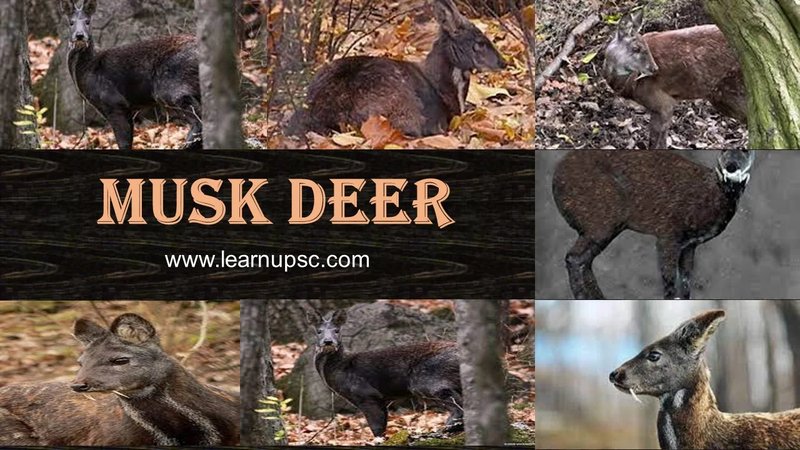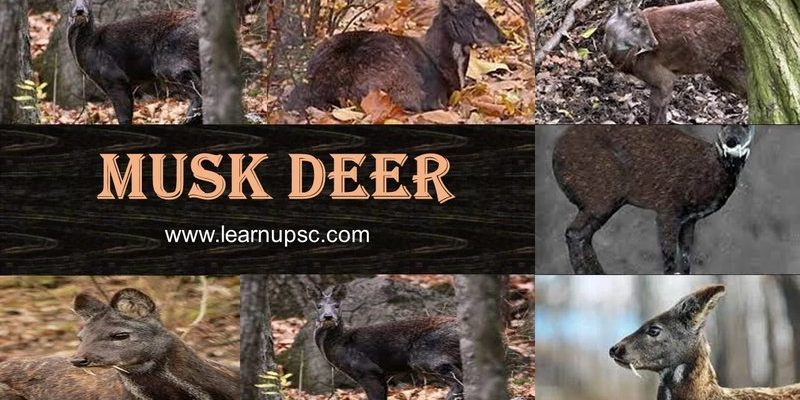
These elusive animals are known for their unique features and behaviors, but confusion about their habits, habitats, and even their existence persists. So, let’s dive into the world of the musk deer, unravel some of these common myths, and uncover the realities that make them so special.
Musk Deer Are Just Like Regular Deer
It’s easy to think of musk deer as miniature versions of the deer we often see in fields or forests. However, here’s the thing: musk deer belong to a completely different family. While regular deer are members of the Cervidae family, musk deer are part of the Moschidae family. This means they have distinct characteristics that set them apart from their more familiar relatives.
For starters, musk deer lack antlers. Instead of these traditional deer horns, males have long, tusk-like canine teeth that protrude from their mouths. It’s a unique look that makes them stand out in the animal kingdom! You might also notice that musk deer are smaller, with a stockier build compared to regular deer. They typically weigh between 10 to 30 pounds, which is quite a bit lighter than, say, a whitetail deer.
While they share some similarities, like being herbivorous and having similar habitats, it’s essential to recognize that musk deer are distinct creatures with their own adaptations. Understanding these differences can enhance our appreciation for the diversity of wildlife.
Musk Deer Produce Musk for Fragrance
Many people associate musk deer with the strong, musky aroma they’re known for, but there’s a common misconception about how this scent is produced and used. Musk is a substance secreted by male musk deer from a gland located near their genitals, and while the scent is indeed potent, it’s not just for creating perfumes as many might think.
The primary purpose of musk is related to mating. Males use this strong fragrance to attract females during the breeding season and mark their territory. So, while musk is valuable in the fragrance industry, it’s important to remember that for musk deer, it’s all about survival and reproduction.
Unfortunately, this demand has led to overhunting and illegal poaching, further threatening these unique creatures. Understanding the role of musk in their lives helps paint a clearer picture of why conservation efforts are so crucial.
Musk Deer Are Endangered Because of Their Size
You might be thinking that a smaller animal like the musk deer would have fewer threats, but that’s not the case. The reality is that musk deer face significant dangers, but it’s not solely due to their size. They are indeed vulnerable to extinction, but the reasons are much more complex.
One of the primary threats comes from habitat loss. As forests are cleared for agriculture or urban development, these deer lose their homes and food sources. Additionally, poaching poses a serious risk due to the high value of their musk. Though their size might make them seem like easy targets, it’s the combination of environmental pressures and human activity that leads to their endangered status.
Conservation efforts are underway in various regions, focusing on protecting their habitats and curbing poaching. By understanding the complexities of their situation, we can be better advocates for their survival.
Musk Deer Are Solitary Creatures
You might picture musk deer wandering alone through the woods, but the truth is a bit more nuanced. While they are predominantly solitary animals, they do have social interactions, particularly during the mating season. Here’s the thing: their social behavior varies depending on the time of year and environmental conditions.
During most of the year, male musk deer establish territories and usually avoid one another to reduce competition for resources. However, when it’s time to mate, they can become more social. Males will engage in displays of aggression and courtship rituals to attract females. Isn’t it interesting how even solitary animals can have such dynamic social lives when the occasion calls for it?
This behavior emphasizes the adaptability of musk deer and how they navigate their environments in various ways.
Musk Deer Are Found Everywhere in Asia
It might seem like musk deer are everywhere in Asia, but they actually have a specific range. They are primarily found in the mountainous regions of Central and South Asia, including countries like Nepal, Bhutan, and Tibet. Their preferred habitats are typically forests and alpine regions, where they have plenty of cover and food.
Here’s the thing: the unique environments they inhabit affect their behavior and adaptations. For instance, musk deer have evolved to be excellent climbers, allowing them to navigate steep terrains quite effectively. This specialization means they aren’t just wandering anywhere; they thrive in particular ecosystems.
Understanding their specific habitat requirements can help in conservation efforts, as preserving the right environments is crucial for their survival.
Musk Deer Are Only Active at Night
While many animals are indeed nocturnal, musk deer are actually crepuscular, meaning they are most active during dawn and dusk. This behavior helps them avoid predators and take advantage of the cooler temperatures when foraging for food. You might find them scampering around early in the morning or just before sunset, making it a bit tricky to spot them in the wild.
This active time is particularly important for their feeding habits. By being active during these twilight hours, they can effectively search for grasses, leaves, and fruits—essential components of their diet. So, if you ever plan to observe them, you might want to rise with the sun or stay up a bit later!
Understanding their activity patterns adds another layer to how we can appreciate and protect these remarkable deer.
The Future of Musk Deer: Conservation and Hope
With all these myths shattered, let’s talk about the future of musk deer. Their plight is a reminder of the importance of wildlife conservation. Various organizations are working hard to protect musk deer and their habitats from poaching and environmental degradation.
Here’s the thing: every small effort counts. From supporting wildlife reserves to spreading awareness about these animals, everyone can play a part in conservation. By understanding the truths behind the myths, we can better advocate for their protection and awareness in our communities.
Musk deer are symbolic of the delicate balance within ecosystems. Protecting them means safeguarding the intricate web of life that surrounds us. It’s not just about saving a species; it’s about preserving the health of our planet.
In conclusion, embracing the reality of musk deer helps us foster a deeper connection with these unique creatures. As we challenge misconceptions and learn about their true nature, we become more empowered to support their conservation. So let’s celebrate these remarkable animals and do our part to ensure they continue to roam our planet for generations to come.

